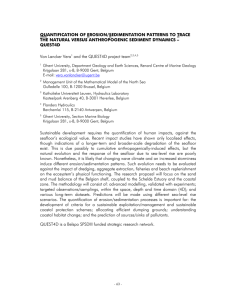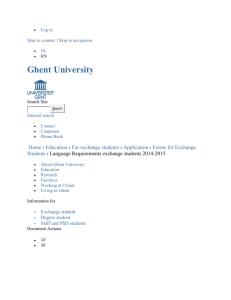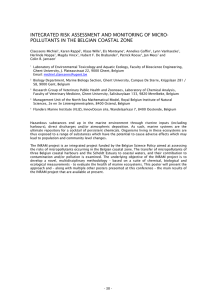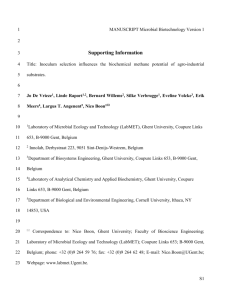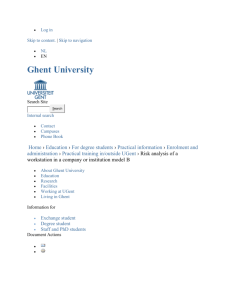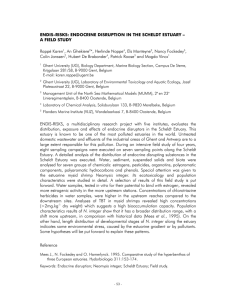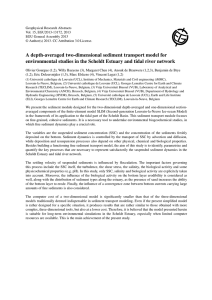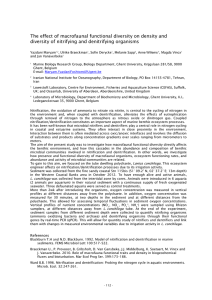Vitse Ilse , Stefanie Adam , Annelies De Backer
advertisement
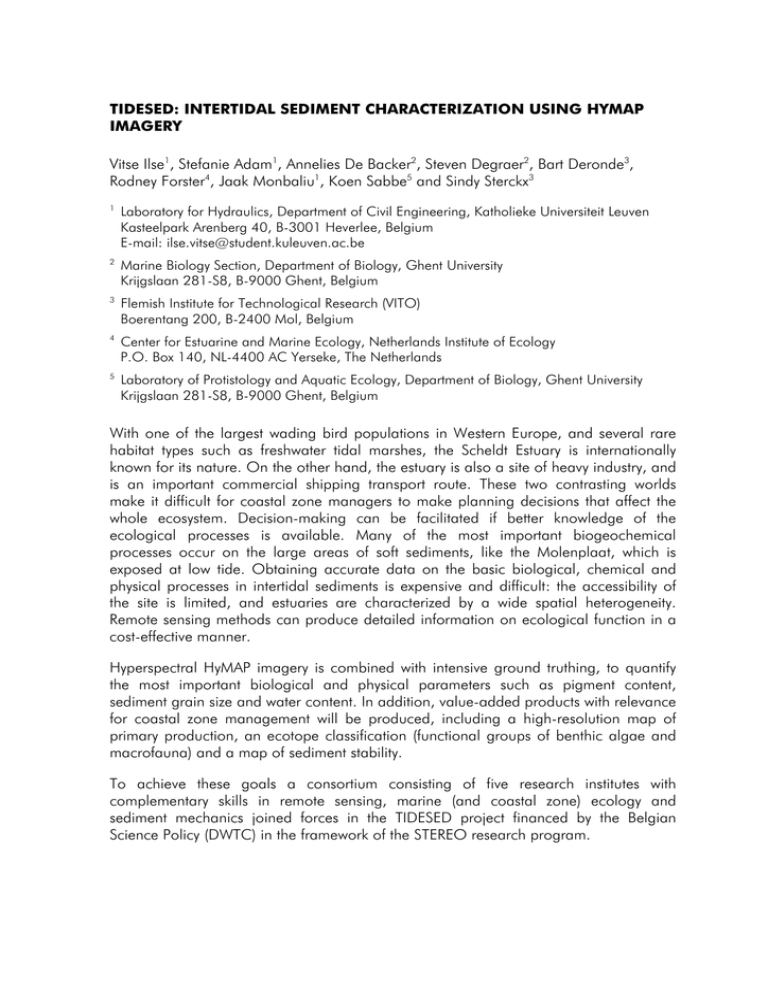
TIDESED: INTERTIDAL SEDIMENT CHARACTERIZATION USING HYMAP IMAGERY Vitse Ilse1, Stefanie Adam1, Annelies De Backer2, Steven Degraer2, Bart Deronde3, Rodney Forster4, Jaak Monbaliu1, Koen Sabbe5 and Sindy Sterckx3 1 Laboratory for Hydraulics, Department of Civil Engineering, Katholieke Universiteit Leuven Kasteelpark Arenberg 40, B-3001 Heverlee, Belgium E-mail: ilse.vitse@student.kuleuven.ac.be 2 Marine Biology Section, Department of Biology, Ghent University Krijgslaan 281-S8, B-9000 Ghent, Belgium 3 Flemish Institute for Technological Research (VITO) Boerentang 200, B-2400 Mol, Belgium 4 Center for Estuarine and Marine Ecology, Netherlands Institute of Ecology P.O. Box 140, NL-4400 AC Yerseke, The Netherlands 5 Laboratory of Protistology and Aquatic Ecology, Department of Biology, Ghent University Krijgslaan 281-S8, B-9000 Ghent, Belgium With one of the largest wading bird populations in Western Europe, and several rare habitat types such as freshwater tidal marshes, the Scheldt Estuary is internationally known for its nature. On the other hand, the estuary is also a site of heavy industry, and is an important commercial shipping transport route. These two contrasting worlds make it difficult for coastal zone managers to make planning decisions that affect the whole ecosystem. Decision-making can be facilitated if better knowledge of the ecological processes is available. Many of the most important biogeochemical processes occur on the large areas of soft sediments, like the Molenplaat, which is exposed at low tide. Obtaining accurate data on the basic biological, chemical and physical processes in intertidal sediments is expensive and difficult: the accessibility of the site is limited, and estuaries are characterized by a wide spatial heterogeneity. Remote sensing methods can produce detailed information on ecological function in a cost-effective manner. Hyperspectral HyMAP imagery is combined with intensive ground truthing, to quantify the most important biological and physical parameters such as pigment content, sediment grain size and water content. In addition, value-added products with relevance for coastal zone management will be produced, including a high-resolution map of primary production, an ecotope classification (functional groups of benthic algae and macrofauna) and a map of sediment stability. To achieve these goals a consortium consisting of five research institutes with complementary skills in remote sensing, marine (and coastal zone) ecology and sediment mechanics joined forces in the TIDESED project financed by the Belgian Science Policy (DWTC) in the framework of the STEREO research program. - 68 -



